Most online stores don't have a traffic problem, but a conversion problem. You can pour money into ads, SEO, and influencers until your marketing budget cries uncle, but if visitors aren't clicking buy, you're basically running a very expensive digital art gallery.
That's where ecommerce conversion optimization earns its stripes. It's the not-so-secret sauce that separates brands growing their revenue from those wondering why their checkout page feels like a ghost town.
The good news? Optimizing your ecommerce website for conversions isn't rocket science. It's a strategy, psychology, and a touch of data-driven wizardry. The even better news? You don't need to reinvent your entire store.
Sometimes, a few tweaks in messaging, design, or checkout flow can turn browsers into buyers faster than you can Google "how to increase online sales."
Stick around, because in this guide we'll unpack proven ecommerce conversion optimization strategies, practical tips, and real-world examples that can help you turn more of your traffic into loyal customers, and maybe even justify your caffeine addiction.
What Is Ecommerce Conversion Optimization?
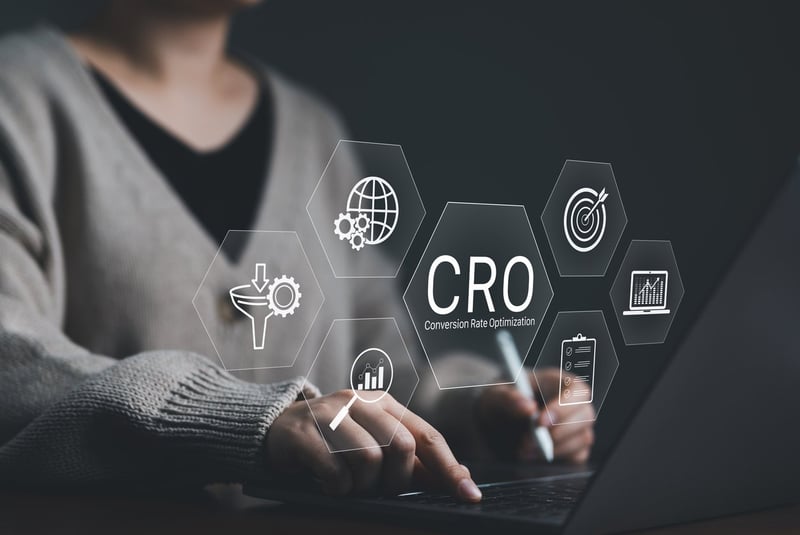
E-commerce conversion optimization is the systematic process of improving the percentage of website visitors who take a desired action, like making a purchase, on an online store.
Simply put, it's about getting more revenue out of your existing traffic.
The "conversion rate" is a simple ratio: (Number of Sales / Number of Visitors) ×100. If 100 people visit your site and two buy, your conversion rate is 2%. The industry average hovers around 1-4%, which means for every 100 visitors, 96 to 99 people walk away empty-handed! That's a significant amount of lost opportunity.
Why CRO Matters
Between rising ad costs, competitive SEO battles, and endless new social channels to chase, customer acquisition is eating up larger slices of marketing budgets every year.
This is where conversion optimization for ecommerce websites shines. By improving your conversion rate even slightly, you can dramatically boost revenue without spending an extra cent on traffic. For example:
- If your store gets 10,000 visitors a month and converts at 2%, you make 200 sales.
- Increase your ecommerce checkout conversion rate optimization efforts and bump that rate to 3%, and you're now making 300 sales, with the same traffic.
Contextualizing for Ecommerce
Conversion optimization for ecommerce website is a specialized field because the customer journey is complex and offers multiple points where a potential sale can die a quiet death. A true ecommerce CRO strategy focuses on key stages:
- Product Pages (The Sales Pitch): Are the product descriptions clear? Are the images high-quality? Do you have social proof like customer reviews? A high bounce rate here is often a signal that the page isn't meeting user intent. Optimizing these pages is crucial for initial engagement.
- Cart Page (The Commitment): This page often sees a high abandonment rate, up to 70% across the industry! Why? Hidden fees, confusing layouts, or a lack of trust badges. Conversion rate improvement here means simplifying the summary and reaffirming value.
- Checkout Flow (The Finish Line): Lengthy forms, required account creation, and a lack of payment options are the silent killers of sales. Ecommerce checkout conversion rate optimization focuses specifically on streamlining these steps, making it a single-page or two-step process, offering guest checkout, and clearly displaying shipping costs upfront.
Why Ecommerce Conversion Optimization Matters

The short answer is that ecommerce conversion optimization turns your online store from a leaky bucket that constantly needs refilling into a highly efficient revenue engine. Let's explain how that happens:
1. Cost Savings vs. Buying More Traffic
Every click you buy on Google or Facebook is a non-renewable resource, and you pay for it whether it converts or not. But when you invest in ecommerce conversion rate optimization services, you are essentially investing in your existing assets (your website and your traffic).
For example, if you spend $10,000 on ads to get 10,000 visitors at a 1% conversion rate, you get 100 sales. If you use that same $10,000 to hire an ecommerce conversion rate optimization consultant and they raise your conversion rate to 2%, you now get 200 sales from the same 10,000 visitors, effectively halving your cost per acquisition!
2. Improving Customer Experience and Loyalty
When a website is optimized for conversion, it means the navigation is clear, the loading speed is fast, and trust signals (like security badges and clear returns policies) are prominent.
A good conversion optimization for ecommerce website strategy fixes frustrating bottlenecks, like forcing users to register before checkout or displaying unclear shipping costs. By making it easy for customers to achieve their goal (buying a product), you inherently improve their experience.
3. Impact on ROI and Long-Term Growth
Every successful optimization is a permanent, fixed improvement to your profitability.
Think of it like compound interest for your business:
- More Profit: You generate higher revenue from the same traffic.
- More Budget: The extra profit can be reinvested into acquiring more traffic or better products.
- Better Scale: When you do decide to scale your ad spend, you are pouring money into a 2% conversion funnel instead of a 1% funnel, meaning your ad dollars go twice as far.
Key Metrics in Ecommerce Conversion Optimization
Here are the metrics that every ecommerce brand should obsess over:
|
Metric |
What It Means |
Why It Matters for CRO |
|
Conversion Rate |
The percentage of visitors who complete a purchase. |
It's the ultimate yardstick for conversion rate optimization ecommerce. A higher rate means you're turning traffic into revenue. |
|
Average Order Value (AOV) |
The average dollar amount spent per transaction. |
AOV boosts revenue without needing more customers. Bundling, upsells, and cross-sells are key ecommerce growth tactics. |
|
Cart Abandonment Rate |
The percentage of shoppers who add items to the cart but don't complete checkout. |
With 70% of carts abandoned, fixing checkout friction is the low-hanging fruit of ecommerce checkout conversion rate optimization. |
|
Bounce Rate |
The percentage of visitors who leave after viewing only one page. |
High bounce rates mean your landing pages aren't doing their job. This KPI shows where you're losing attention (and potential sales). |
|
Customer Lifetime Value (CLV) |
The total revenue a business can expect from one customer over time. |
CLV ties directly to retention. A strong conversion optimization for ecommerce website is about creating repeat buyers. |
How These KPIs Guide Optimization Priorities
Each of these numbers tells a story, and that story guides your roadmap for ecommerce conversion rate optimization services.
For example, if your conversion rate is solid but AOV is low, focus on upselling and bundles. If cart abandonment is your Achilles' heel, double down on checkout improvements like guest checkout or transparent shipping costs.
Bounce rate issues? Time to refine your product pages and nail your digital sales strategies. Low CLV? You might be winning first-time buyers but losing loyalty, which means retention tactics like post-purchase emails, loyalty programs, or even the best AI digital sales agents for GTM strategies can make a huge difference.
How to Optimize Your Ecommerce Conversion Rate
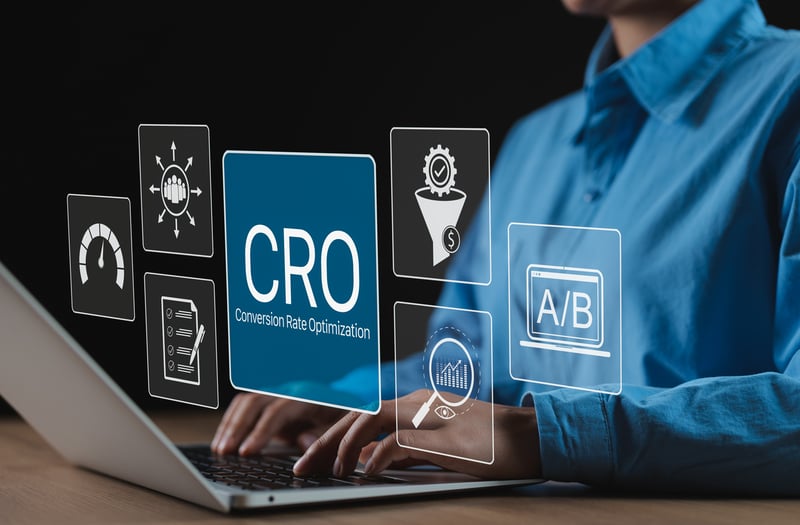
Once you understand why ecommerce conversion optimization matters and what metrics to track, the real work of implementation begins. This is where strategy meets execution:
1. Understand Your Audience (Analytics + Behavior Tools)
The first step in any successful ecommerce conversion rate optimization consultant's playbook is deep dive research. This involves moving beyond basic traffic numbers:
- Quantitative Data (Analytics): Identify where people drop off. Are they consistently abandoning cart after they hit the shipping calculation page? This points to a shipping cost issue.
- Qualitative Data (Behavior Tools): Use heatmaps, session recordings, and customer surveys to understand the why. A user might be hovering their mouse over the returns policy link and then leaving, indicating trust issues that need to be addressed on the page.
2. Optimize Product Pages (Descriptions, Visuals, Reviews)
The product page is your digital storefront salesperson. It needs to be clear, persuasive, and transparent. Here's how to achieve that:
- High-Quality Visuals: Use multiple angles, lifestyle shots, and, increasingly, 360-degree views or short videos.
- Compelling Descriptions: Explain how the product solves a problem. A smart digital sales strategy ensures descriptions are scannable and address key objections upfront.
- Social Proof (Reviews): Nothing boosts trust faster than peer validation. Ensure reviews are visible and searchable. Displaying user-generated content (UGC) can provide a significant uplift in how to increase website sales.
3. Streamline Checkout (Reduce Friction)
Friction is the enemy of the final sale. Ecommerce checkout conversion rate optimization aims to make the path from cart to purchase as smooth and short as possible. The following is how that happens:
- Guest Checkout: Do not force registration. Requiring an account is one of the top reasons for cart abandonment.
- Progress Indicators: Show users exactly where they are in the process (e.g., Step 1 of 3).
- Payment Options: Accept all major credit cards, plus popular options like PayPal, Apple Pay, and local payment gateways. Lack of preferred payment options is a common killer of potential sales, especially when strategizing how to increase sales online store.
4. Leverage Social Proof and Urgency
These are psychological triggers that nudge indecisive buyers into action. This approach is fundamental to DTC marketing (Direct-to-Consumer), where building immediate trust and driving quick decisions is vital.
- Trust Signals: Clearly display security badges, warranties, and an accessible return policy. This tackles buyer anxiety.
- Urgency: Use legitimate scarcity (e.g., "Only 3 left in stock!") or time limits (e.g., "Order in the next 2 hours for next-day shipping!"). Note: The key is to be genuine because fake urgency erodes trust and is bad ecommerce conversion optimization.
- Social Proof: Display recent sales (e.g., "John from London just bought this 5 minutes ago!").
5. Test, Measure, and Iterate with A/B Testing
The final, non-negotiable step for any successful ecommerce conversion optimization process is continuous testing. You never stop.
- A/B Testing: Change one element (e.g., the color of a "Buy Now" button, the headline of a product page) and split your traffic 50/50 to see which version performs better.
- Prioritization: Focus your tests on high-traffic, high-value pages. A 10% lift on your product page will yield significantly more revenue than a 10% lift on your "About Us" page.
Best Practices for Ecommerce CRO

You've got the strategies down, but how do you bake them into everyday operations so they stick? Let's help you out with the essentials.
Personalization
Are you aware that 64% of consumers are more likely to buy from a brand that offers personalized experiences?
For ecommerce brands, this can mean showing products based on browsing history, recommending items frequently bought together, or even sending cart recovery emails with the exact product images the customer abandoned. That's conversion rate optimization ecommerce that feels personal instead of pushy.
Mobile-First Design
About 57% of online sales now happen on mobile devices, yet too many stores still treat mobile as an afterthought. That's a fast track to high bounce rates and lost revenue.
A mobile-first design ensures product images load fast, CTAs are thumb-friendly, and checkout flows don't feel like filling out tax forms.
Simplified Navigation
If shoppers need a map and compass to find what they want, they won't stick around. Clean menus, intuitive filters, and prominent search bars keep users moving smoothly toward checkout. It's the same principle SaaS marketing teams apply when designing onboarding flows, which is to reduce friction, guide users logically, and remove decision fatigue.
Retargeting Campaigns
Not every visitor buys on their first visit. Or second. Or even third. That's why retargeting campaigns are important.
Research shows retargeted ads can boost conversion rates by up to 150%, making them one of the most effective ecommerce growth tactics. When combined with personalized messaging, like offering a small discount on an abandoned cart item, you transform lost opportunities into recovered revenue.
Ecommerce Conversion Optimization Services & Agencies
At some point, every ecommerce brand faces the million-dollar question: should you DIY your conversion rate improvement or call in the pros?
Let's weigh the options first:
|
Feature |
DIY/In-House CRO |
Ecommerce Conversion Optimization Agency |
|
Initial Cost |
Low (avoiding agency fees) |
High (monthly retainer or project fee) |
|
Hidden Cost |
Lost time, expensive software subscriptions, poor test design, delayed results. |
Time spent managing the relationship. |
|
Expertise |
Limited to the internal team's skills (usually a marketer or developer). |
Full A-team, including Data Analysts, UX Designers, Developers, and Conversion Copywriters. |
|
Speed and Volume |
Progress is slow because tests are run infrequently due to limited resources. |
Fast, as they run continuous, prioritized A/B tests to determine how to increase online sales fast. |
DIY works well if you're just dipping your toes into ecommerce conversion optimization tips, like testing button colors or adjusting product copy. But if you want to overhaul your checkout flow, run deep-dive audits, or unlock scalable ecommerce growth tactics, agencies usually deliver more bang for your buck.
Choosing the Right Partner
When evaluating an ecommerce conversion rate optimization agency, look for:
- A proven track record (case studies, testimonials, or industry-specific wins).
- Transparent pricing and clear deliverables.
- Expertise in conversion rate optimization ecommerce tools (heatmaps, session recordings, AI-driven insights).
- Flexibility to scale services as your business grows.
- A collaborative approach that values your brand's voice and customer experience.
Real-World Examples of Ecommerce CRO Success

These real-world wins demonstrate that focused CRO efforts, whether large or small, are the most reliable path to achieving how to increase online sales.
Small Business: Personalization Drives $3.4M in New Revenue
A small-to-medium DTC brand, GetFPV, recognized a critical conversion opportunity: their product pages, while functional, lacked persuasive urgency and clarity.
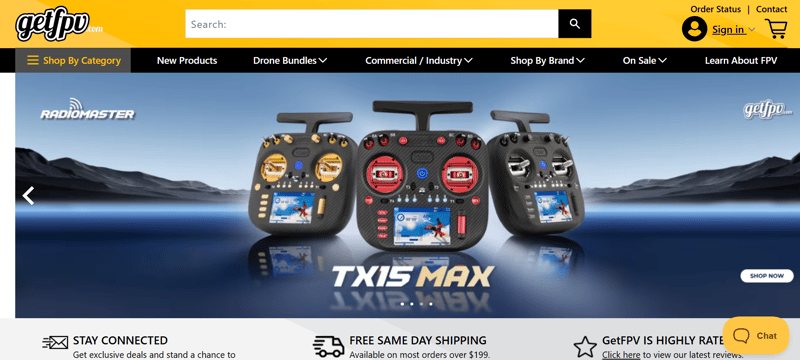
Instead of embarking on a costly ecommerce website redesign, they focused their ecommerce conversion optimization efforts on simple, high-impact changes using A/B testing software.
- The Tactic: They increased the visibility of their main Call-to-Action (CTA) buttons, added clear urgency signals (e.g., "Only 5 left in stock"), and implemented a personalized social proof widget that showed actual products recently bought by others, such as "42 people also viewing this product."
- The Result: By systematically optimizing these elements, the brand attributed $3.4 million in new revenue and over 36,000 additional transactions to these on-site changes.
Large Brand: Simplifying Checkout Reduces Friction
For large retailers, even small percentage gains translate into millions. Walmart Canada, facing a significant percentage of mobile traffic that was not converting, made a strategic decision to revamp their mobile site's user experience (UX).
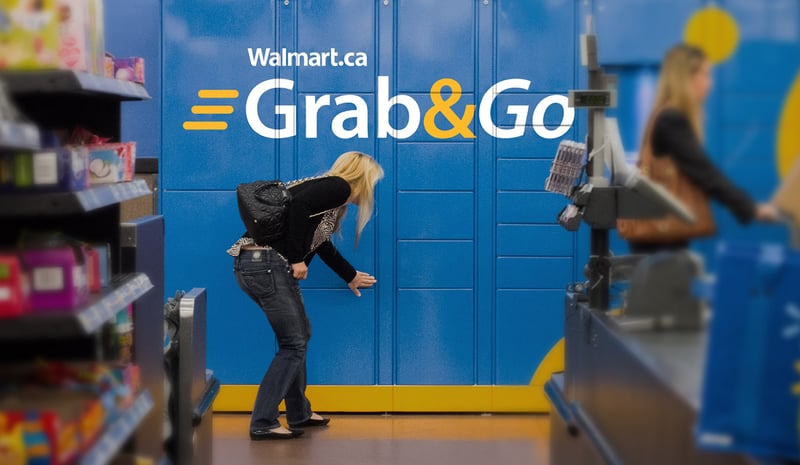
- The Tactic: They focused heavily on ecommerce checkout conversion rate optimization. This involved a responsive redesign to ensure a seamless experience on tablets and smartphones, streamlining the checkout form, and conducting extensive usability testing.
- The Result: The redesign resulted in an overall conversion boost of 20% across all devices, with mobile orders skyrocketing by an astounding 98%.
Emerging Trend: AI-Driven Sales Optimization
The newest frontier in ecommerce conversion optimization is the deployment of best AI digital sales agents for GTM strategies. These AI tools are moving beyond simple chatbots to become autonomous optimizers that personalize the entire customer journey in real-time.
- The Concept: AI agents analyze customer behavior (preferences, engagement, affinity) and dynamically change website elements and pop-up messaging to create a hyper-personalized page for every single visitor.
- The Impact: Companies using these advanced AI-powered platforms are reporting up to 21% conversion lift across all their landing pages.
Common Challenges in Ecommerce CRO (and Solutions)
Many businesses run into predictable pitfalls. Understanding these common roadblocks and their solutions is crucial for turning potential failures into actionable steps toward conversion rate improvement.
Challenge 1: High Acquisition Costs → Focus on Retention
The grim reality for most online retailers is that the cost of acquiring a new customer (CAC) through paid ads is soaring, often outpacing the initial revenue of the first sale. This high cost forces a constant, unsustainable chase for new traffic, which is the antithesis of effective ecommerce conversion optimization.
The Solution: If the first transaction barely breaks even, profitability lies in the CLV. A core ecommerce conversion rate optimization strategy here is to view the first purchase not as the finish line, but as the start of the relationship. Focus your optimization efforts post-purchase:
- Optimize Thank You Pages: Use this page to offer a small, low-friction second purchase (e.g., a relevant complementary item) or a referral link.
- Strategic Email Sequences: Automate personalized email sequences that offer value, guides, and loyalty rewards, significantly increasing how to increase online sales from existing customers.
Challenge 2: Limited Resources for Testing → Prioritize High-Impact Pages
For small businesses or those without a dedicated ecommerce conversion optimization agency, time and traffic are limited resources. Spreading testing efforts across low-traffic pages is a waste of both.
The Solution: Concentrate all your efforts on the pages that have the highest traffic and the most direct impact on revenue. This means prioritizing:
- High-Traffic Entry Pages (e.g., your homepage or key landing pages).
- High-Drop-Off Pages (e.g., the Cart and Checkout).
- Key Product Pages (the ones driving the most visibility).
By focusing on these areas, even small, successful A/B tests deliver significant, measurable boosts to increase website sales.
Challenge 3: Overcomplicating Changes → Keep Improvements Customer-First
A common amateur mistake is over-engineering the solution. Developers might argue for a technically complex backend change, while marketing pushes for a flashy new feature, but neither focuses on the user's primary goal.
The Solution: Effective conversion optimization for ecommerce website is often incredibly simple. Here's how to stop complicating things:
- Clarity over Creativity: Ensure your Unique Value Proposition (UVP) and Call-to-Action (CTA) are crystal clear.
- Address Objections: Simply adding a link to your Return Policy next to the "Add to Cart" button can boost conversions by preemptively tackling buyer anxiety.
- Focus on the Core Funnel: Before debating AI-powered chat widgets, make sure your basic checkout doesn't require five unnecessary form fields.
Future of Ecommerce Conversion Optimization
The future of conversion is less about fixing errors and more about predicting and serving customer needs before they even click a button. Let's explain why.
1. AI and Machine Learning for Predictive Personalization
AI engines are already becoming the best AI digital sales agents for GTM strategies, analyzing billions of data points in real-time to generate a uniquely optimized experience for every visitor.
- What it looks like: Instead of testing a red button vs. a green button, the AI serves a red button to Customer A (who historically responds to urgency) and a green button to Customer B (who prefers a calm, trust-driven design) simultaneously.
- The Impact: This predictive personalization maximizes ecommerce conversion rate optimization by dramatically increasing the probability of purchase for every session, making the user's journey feel seamless, not stalked.
2. Voice Commerce and Conversational Checkout
As smart speakers and AI receptionists become primary shopping interfaces, CRO will shift to auditing spoken interactions. If 13.6% of the US population is already using voice assistants for shopping-related activities, the checkout needs to be conversational.
- The Focus: Ecommerce checkout conversion rate optimization will focus on minimizing steps in a verbal transaction. Friction points will be auditory, not visual. The goal is a lightning-fast, secure "zero-click" checkout.
Greater Focus on Omnichannel Consistency
Customers no longer distinguish between your website, your app, your social media feed, or your physical store. The next wave of digital sales strategies demands consistency.
CRO efforts will expand to ensure that a customer who views a product on Instagram, adds it to their cart on a mobile browser, and finishes the purchase on a desktop experiences no friction and sees the same personalized offers across all touchpoints.
Conclusion
You've learned that getting people to your online store is only half the battle. The true differentiator between a struggling store and a revenue-generating machine is effective ecommerce conversion optimization.
It is the most profitable investment you can make, offering an exponential ROI by maximizing the value of the traffic you already own, rather than perpetually increasing your ecommerce website cost on traffic acquisition.
And while optimizing on your own can work, partnering with the right ecommerce conversion optimization agency often accelerates results and saves costly trial-and-error.
If you're serious about driving more revenue from the traffic you already have, Roketto can help. Our team specializes in ecommerce conversion optimization services, including Shopify development services, audits, A/B testing, UX design, and growth strategies.
Want to see what your store could really do?
Contact us today, and let's turn your visitors into customers who keep coming back.
Roketto Team
Who the heck is "Roketto Team"? Great question! We use this authorship from time to time for guest writers and previous authors are no longer affiliated with the Roketto brand. What about the cute little rabbit in the Roketto Team avatar? That's Piko, our loveable, space travelling mascot. If this is your first time seeing him, don't worry, it won't be your last. He likes to turn up throughout Roketto's website and content, always looking to help our audience with their marketing needs.











2.png)
2.png)


